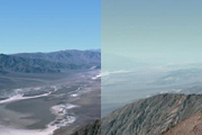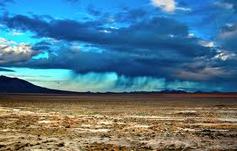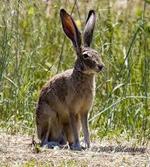Abiotic Factors
Abiotic Factors are the environments non-living components, the physical or chemical factors such as temperature, forms of energy available, water, nutrients. Air quality and rain are two main Abiotic factors that have an effect on the ecosystem of death valley
Biotic Factors
Unlike Abiotic factors, biotic factors are all the living things in the environment that have a Direct or indirect effect on the environments existence. For an example when a predator consumes its prey, it would be considered as a biotic factor. In death valley there are two main biotic factors that tend to have an effect to one another. These two biotic factors are the Black Tailed Jack Rabbit and also wild flowers.




